The HTC One M9 Review: Part 1
by Joshua Ho on March 22, 2015 7:00 PM EST- Posted in
- Smartphones
- HTC
- Qualcomm
- Mobile
- Snapdragon 810
- One M9
GPU Performance
Although CPU is often the focus of any given SoC, it’s important to avoid using a weak GPU as even cases as simple as web browsing or navigating through a UI can rely on the GPU for rendering, in addition to the common use cases of gaming. It’s also possible that GPUs can be leveraged for compute, which has great use for cases like image and video processing. To this end, the Snapdragon 810 has an Adreno 430 GPU that runs at 600 MHz, similar to the Snapdragon 805’s Adreno 420. As a result, all of the improvements we’re seeing from the Adreno 420 to the Adreno 430 are solely the result of architecture and driver improvements rather than clock speed increases.
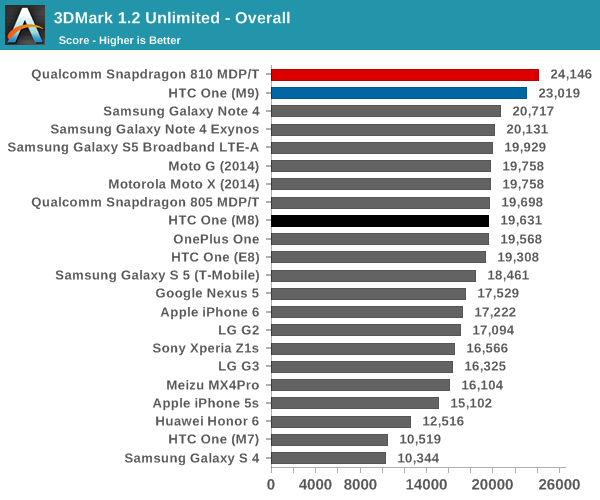

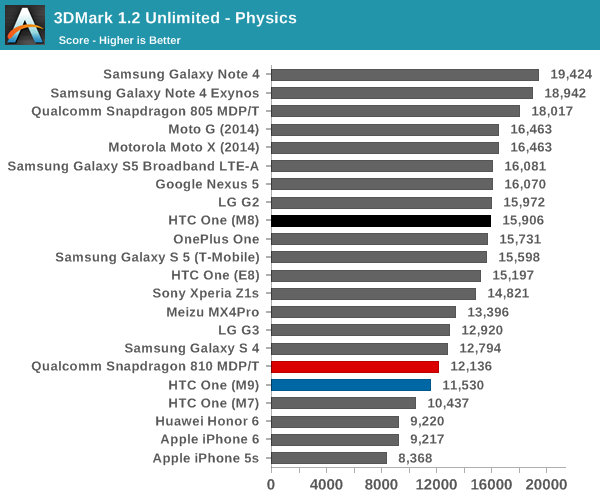
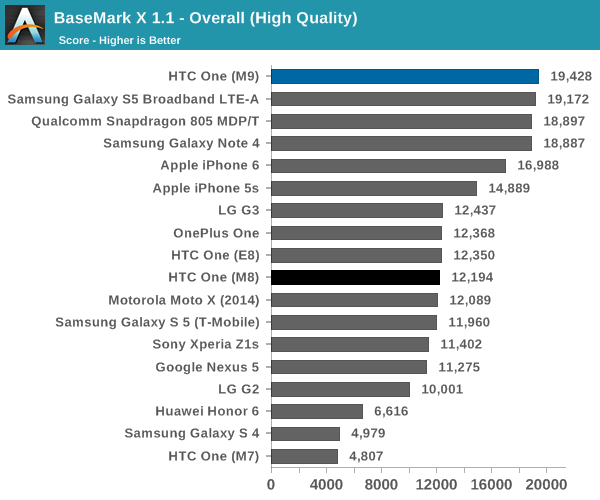
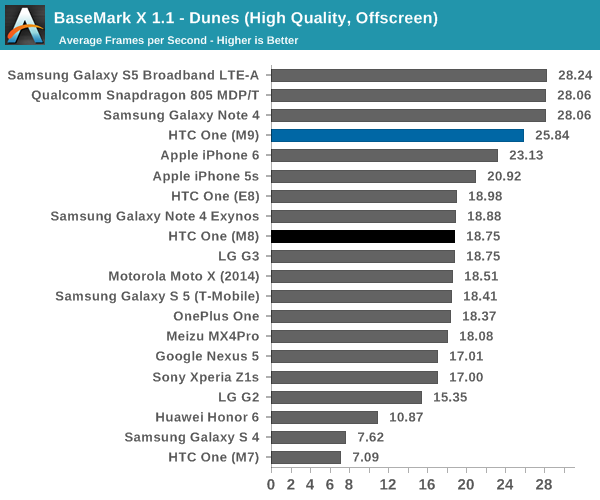
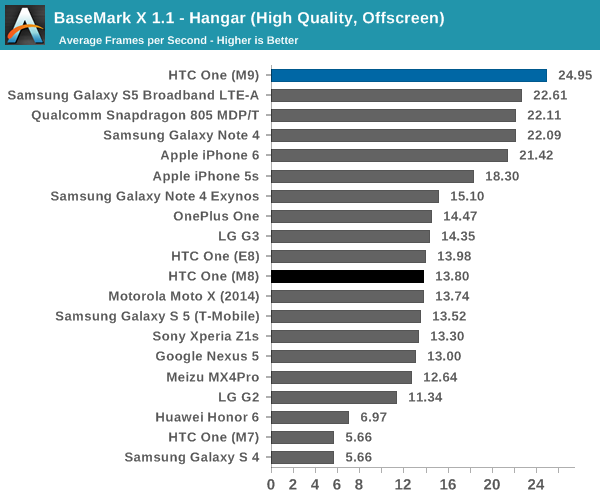

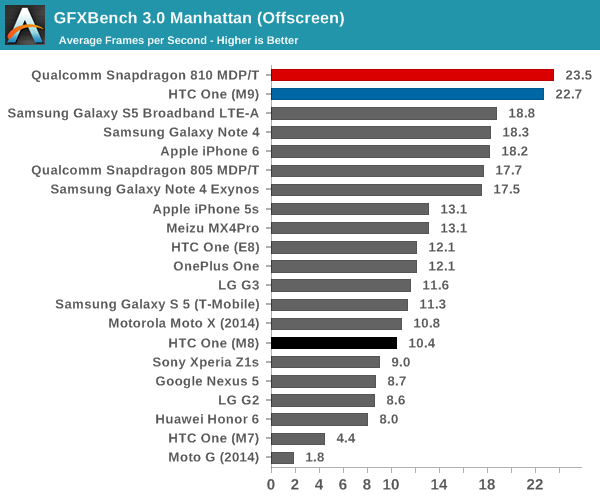
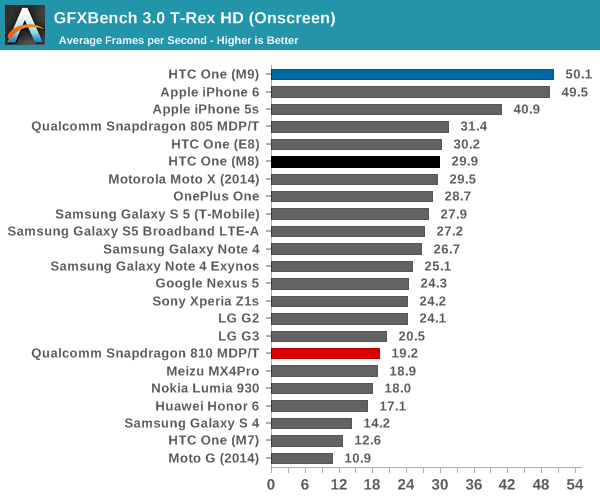
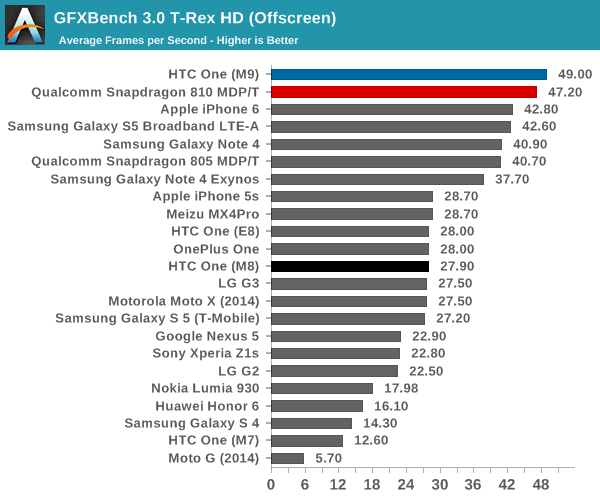
As one can see, the One M9 manages to deliver results that basically mirror what we saw with Qualcomm’s MDP/T, although there is some variance that can be seen. HTC did make the right call here with the 1080p display as we see a pretty massive jump in performance from the One M8 to the One M9 in GPU performance, and using a 1440p display would have eaten away most of these gains. I suspect that the hit to GPU performance with 1440p displays will be mostly compensated for by the next generation of SoCs, but for now I’m still not sure that it makes sense to push such a resolution on a phone.
NAND Performance
Storage performance is often an unnoticed aspect of any device, but it can often force itself to the foreground when it’s insufficient. Probably the most famous case of this is the Nexus 7 (2012), which was really the first device that caused people to start to look closer at NAND performance. While we’re close to a better solution for storage testing, for now we can still look at Androbench to get a decent idea of relative storage performance, although this is nowhere near as extensive as our SSD testing.
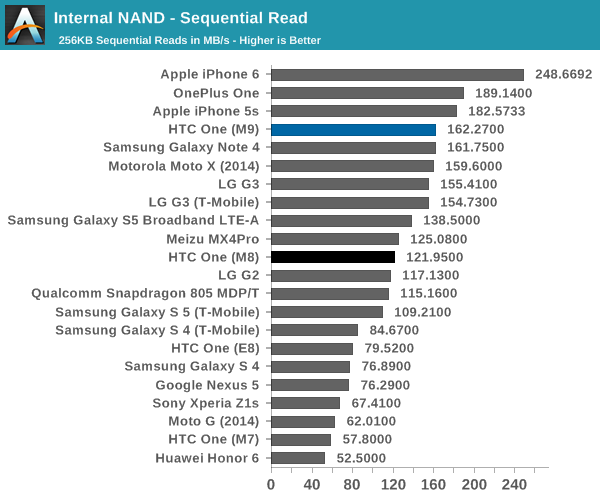
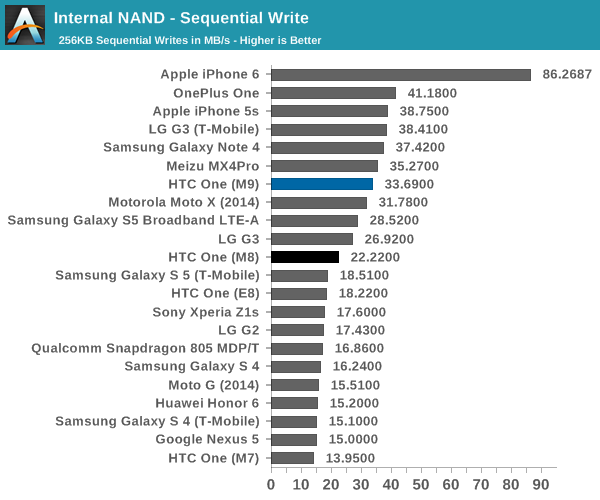
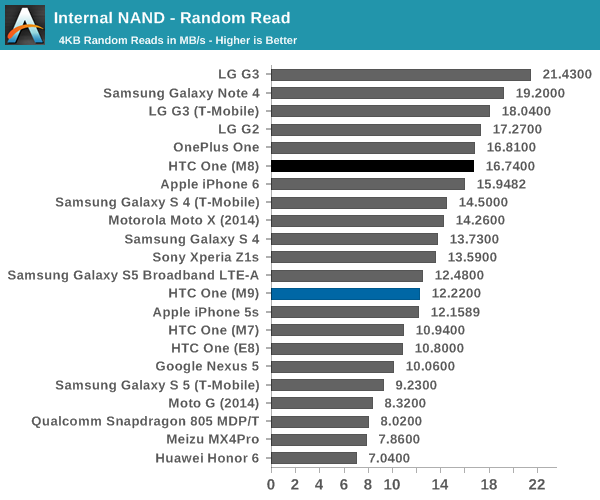
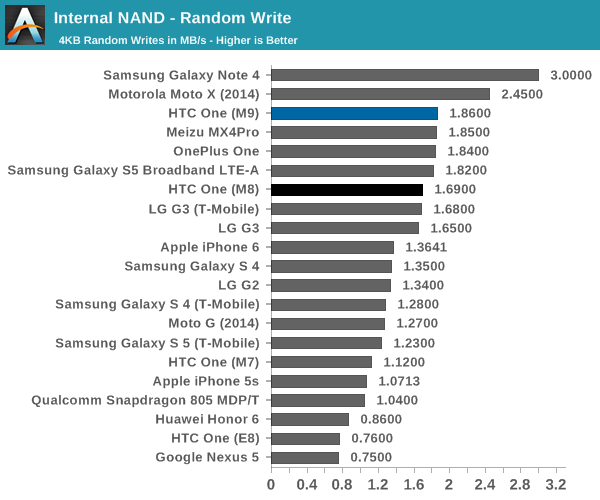
In this test, HTC does show some level of improvement over the previous generation but does regress a bit in the random read department. As far as I can tell, HTC is using Samsung’s eMMC solution here, with the model name BGND3R, as opposed to the One M8 which used a SanDisk eMMC IC. It's interesting to see how the One M9 still uses ext4 here, even though the Nexus 9 adopted F2FS. As far as I can tell, there seems to be a reason to adopting one filesystem over another but this reason is still unclear to me.










132 Comments
View All Comments
xnay - Monday, March 23, 2015 - link
Disappointing display, disappointing battery life - enough for me, these are key aspects of a mobile phone.And the camera is disappointing also and lacks OIS.
Chaser - Monday, March 23, 2015 - link
Crap battery life. Pass. Bummer too because I like HTC.trivor - Monday, March 23, 2015 - link
I think the really amazing things when you look at all the benchmarks is how well the LG G2 has held up at the 18 month point since launch. It's battery life is excellent and overall performance of the Snapdragon 800 is quite good overall with an excellent 1080p IPS panel.will54 - Monday, March 23, 2015 - link
Has anyone else read any reviews of the M9, and if so did they have the same complaints of the screen? They might be using a different vendor for screens and Anandtech might have just gotten a lemon.aryonoco - Monday, March 23, 2015 - link
Yes every review of the M9 basically says the same. The panel is sub par, the colours have a green tint to them, and it's not accurate.M7's display was better than M8, which is itself better than M9. Such a massive disappointment to see this regression.
hp79 - Monday, March 23, 2015 - link
Is the front bezel plastic or metal?From the article, "but the plastic bezel has been updated to surround the entire front of the device instead of just the speakers"
Can you double check whether the front piece is plastic or metal?
Engadget posted a review yesterday saying "... the M9 is the first One with a front plate hewn from a single block of aluminum, with holes machined in to hold the screen and speakers in place. ..."
Thanks.
Kepe - Monday, March 23, 2015 - link
Looking at the pictures, the texture of the front looks a lot like what plastic usually looks like. Completely different from what the metal parts at the back look like.JoshHo - Tuesday, March 24, 2015 - link
It's definitely plastic, just touching it when the phone is cold makes it obvious.Samus - Monday, March 23, 2015 - link
ohhh HTC, what a dud :(no wonder the CEO stepped down.
Morawka - Tuesday, March 24, 2015 - link
Snapdragon 810 is literally breathing fire. Sad that the first 64bit soc from qualcomm runs hot... They really dropped the ball by not having a Krait 64 bit soc by now.. Apple's done shipped 3 64 bit soc's, soon to be 5...That's right, by the time Qualcomm ships Krait 64bit. Apple will have already shipped 5 different 64bit SOC's counting the A7, A8, A8X, A9, A9X. And probably 250 million of them (didn't do the math since release but it's safe to say it's close)
This has really hurt android as a platform. It will certainly recover, but the damage is done.